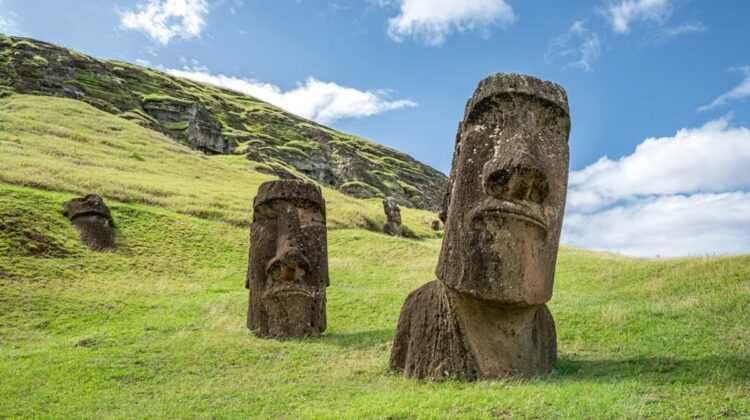
The mayor of the island has suggested the fire was started by humans.
Some of Easter Island’s holy stone carvings have been damaged by fire. There are rumors that the fire may have been ignited on purpose, however the full extent of the damage is still being assessed.
According to Carolina Pérez Dattari, Undersecretary of Cultural Heritage at Chile’s Ministry of Culture, the “severe fire” started around the Rano Raraku volcano and consumed up to 100 hectares (247 acres) of the Rapa Nui Natural Park. She noted that the wildfire had scorched an undetermined number of the island’s iconic moai, or carved stone statues.
The mayor of Easter Island, Pedro Edmunds Paoa, told the local media that he thought the fire “was not an accident” and added that “all the fires on Rapa Nui are caused by humans.” He also criticizes the Chilean government for not funding a fire safety strategy for a “open-air museum.”
The harm brought on by the fire “cannot be undone,” allegedly said Edmunds Paoa.
No matter how many millions of euros or dollars are invested in it, the shattering of an original and symbolic stone cannot be repaired.
Rapa Nui is the island’s original name. One of the most distant inhabited islands in the world, it may be located 3,500 kilometers (2,175 miles) off the west coast of Chile in the south Pacific Ocean. It is well renowned for its famous sculptures, which stand 4 meters (13 feet) tall and were carved by early Polynesians on the little volcanic island more than 500 years ago.
It’s unknown what the sculptures stand for because the island doesn’t have a documented history. The monuments, however, are frequently seen as paying respect to the island’s forefathers.
There are probably hundreds more of the large sculptures on the island; archaeologists have only found 887 so far.
Over 13,000 kilometers (8,077 miles) away, one of the moai may be located in the British Museum in London. It goes without saying that the Rapa Nui people believe the moai to be stolen and have demanded its return.

Leave a Reply